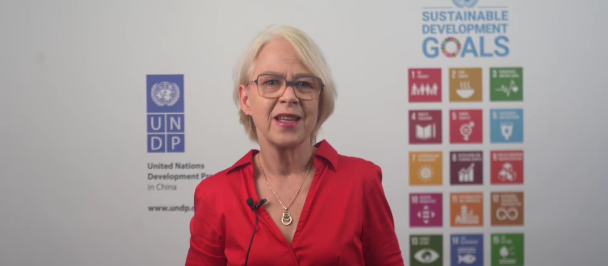LOCAL COMMUNITIES SHARE THEIR INSIGHTS ON HOW TO BETTER CONSERVE THE ENVIRONMENT. (PHOTO: QINGHAI PMO)
(Originally published on 04/15/2015)
In late March a team conducted field visits as part of the UNDP and Global Environment Facility (GEF) Strengthening the effectiveness of the protected area (PA) system in Qinghai Province project to involve local communities in biodiversity conservation efforts. The harsh environment conditions of Qinghai—the extreme cold, arid and high latitudes - have made it one of the most sparsely populated regions in China. On the other hand, Qinghai provides ideal shelters for many wildlife spices, with its unique high altitude grassland, mountain, wetland, and desert and forest ecosystems.
Since 1970s, Qinghai has established a network of nature reserves to conserve its biodiversity and ecological functions but part of these covered the pre-existing community rangeland. Villagers who were used to their traditional land-use rights often felt the strict rules and regulations of the protected agencies demotivated them from participating in nature conservation.
Partnering with UNDP since 2007, Qinghai province has been exploring new ways of protected area management. As a first endeavor, the UNDP EU-China Biodiversity Programme set up small grants and conservation agreements with communities as incentives to help reduce the threats from hunting, farming and herding in reserves while engaging them so they could still learn how to reduce the threats of biodiversity. To further promote community engagement, the UNDP-GEF Qinghai project established 12 community co-management pilot sites in the Sanjiangyuan National Nature Reserve (SNNR).
To ensure community-based conservation efforts be fully implemented, this month a team from the Qinghai project was organized to conduct a field visit to four of the pilot villages. During their ten-day visit, the team helped the co-management committees of the villages to improve their management mechanisms and annual work plans by engaging the local communities with governmental officials into open discussions. “The key to successful project activities’ implementation is to truly engage the local stakeholders into the planning process, which includes local governments, research institutions as well as the villagers,” said Mr. Guan Ming, the local project officer who is in charge of project activities. After open discussions with the villagers and local governments, the field team helped the pilot communities address their pressing local issues through the project’s 2015 activities.
Guan explained how local individuals made very important contributions given their local knowledge. “When we were discussing the incoming activities, one village mentioned it is an important snow leopard conservation site (snow leopards are "First Class" protected animals in China), and they want to carry out a campaign to promote it as a way to increase public awareness of wildlife protection. We thought this is a really good suggestion and now that event is on their agenda.” In addition, suggestions regarding improving local livelihood were also adopted such as constructing new garbage disposal stations, raising local hygiene and environment awareness as well as repairing the local health centers.
In addition, the field team also collected firsthand information from the villagers to map out the Sanjiangyuan National Nature Reserve (SNNR) in a more detailed and intuitive way. “By talking to the villagers, we learned about places in the SNNR that are important to the villagers, which include their holy mountains and lakes. They also told us where the wildlife is most likely to appear,” said Guan. This information from pockets of local communities will feed into the Qinghai Project Demonstration Site Nature Resources Distribution Map, which will serve as a holistic and complete map of SNNR’s nature resources. The first draft is expected to be finished this year.

 Locations
Locations




